All organisms need food to grow, move and live. But sometimes, finding food is not that easy.
Think about how you get food.
First, you realise that you are hungry. Then, you need to know where your closest food source is. This might be your fridge or the nearest takeaway. Once you figured that out, you move toward the food.
Also, bacteria need to find food and move toward it. And to do that, they have a special system that is called chemotaxis. Chemotaxis tells bacteria where their nearest food source is and makes bacteria move to that food source.
Let’s look at how the chemotaxis system works.
When bacteria get hungry, they move too
Scientifically speaking, chemotaxis is the bacterial movement toward or away from a chemical. This means, that a chemical can activate the chemotaxis system. Such a chemical can be a nutrient like sugar, an amino acid, nitrogen or oxygen. Also, metals, hormones or even neurotransmitters can activate the bacterial chemotaxis system.
And because these chemicals have systemic effects, they are also called chemoeffectors. Since these chemoeffectors can be good or bad for the bacterium, the movement can be toward or away from this chemical.
So, in case the bacterium is hungry and found some sugar nearby, the chemotaxis system makes the bacterium swim to the food. Yet, moving the whole bacterium costs a lot of energy. That’s why the chemotaxis system is very well regulated so that the bacterium does not waste any energy.
Just as you have to be very hungry to drag yourself up the sofa to move towards the fridge ?
How does chemotaxis work?
First of all, a bacterial cell needs to understand that it is hungry. You know that you’re hungry when you feel that empty stomach. A bacterium senses its energy levels similarly, to know that it is low on nutrients.
For example, in our figure, the bacterium misses a nutrient that is sugar (in blue). To understand whether there is any sugar in its surrounding, our bacterium has different chemoreceptors on its surface. These are the purple antennae on the outside of the bacterium.
These chemoreceptors contain two parts: one half sits on the outside of the cell while the other half is stuck on the inside. Both parts are connected through the bacterial cell membrane.

On the outside, the chemoreceptor can bind the specific chemoeffector. This binding activates the chemoreceptor as you can see with the star in the figure.
On the inside of the cell, the chemoreceptor is bound to a specific response system, the so-called two-component system. This sytem gets activated when the chemoreceptor binds the fitting effector on the outside.
Chemotaxis helps bacteria sense and react
In this case, one partner – the sensor protein – actives a second partner – the response regulator. This protein is the purple pacman that is responsible to respond to the incoming signal.
It responds by binding to the flagellum of the bacterium. This flagellum is a fascinating little machine that works like a little rotor with a propeller.

Thus, the binding of the response regulator activates the flagellum and it starts spinning. This spinning now moves the bacterium.
If the chemoeffector is good for the bacterium, it will move towards the chemical. We call this behaviour positive chemotaxis since it has an advantage for the bacterium.
However, if the chemoeffector is dangerous or toxic, the bacterium will move away from it. This negative chemotaxis protects the bacterium from dangerous chemicals. Hence, chemotaxis helps bacteria stay safe, too!
Chemotaxis helps bacteria in different situations
Interestingly, bacteria do not only use chemotaxis to find nutrients. When they arrive within the human body or a plant they can also sense certain hormones or even neurotransmitters. In this case, the bacterium realises that it arrived inside a human body or plant.
Then it can respond by swimming towards it. And it starts producing virulence factors to infect the cell and thus the body.
In any case, chemotaxis helps bacteria to survive either by finding nutrients or by helping them infect cells and grow within them.
Take away from this week’s article:
- chemotaxis helps bacteria know that they found a specific chemical
- presence of the chemical activates their flagellum which allows them to swim
- chemotaxis helps bacteria decide the direction of their movement: it swims toward the chemical if it supports bacterial growth or away if it is damaging

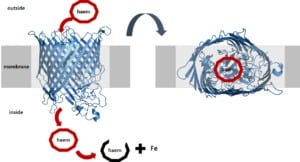
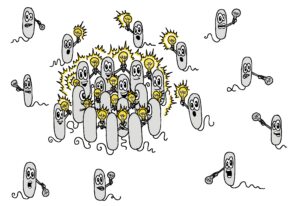
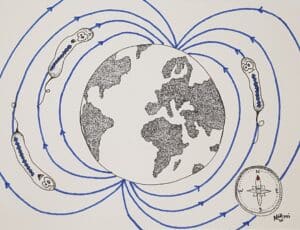
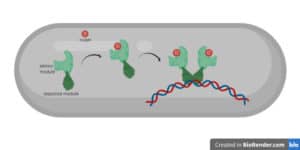
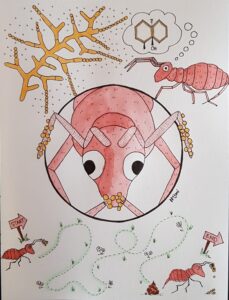
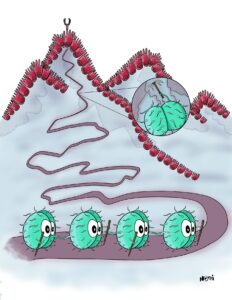
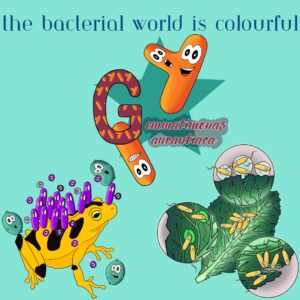
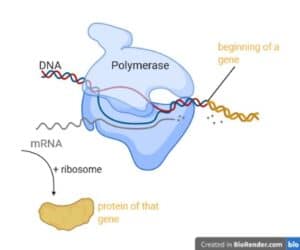
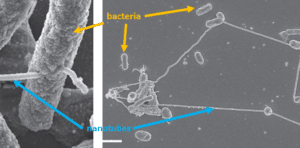

4 Responses